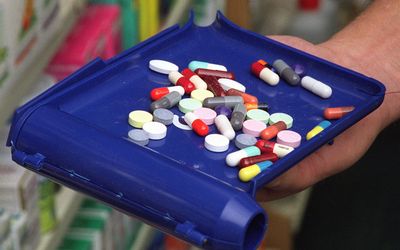SA’s use of antibiotics soared in the decade to 2010, yet it is doing a much better job than its fellow Brics (Brazil, Russia, India, China) bloc nations at containing resistance to these life-saving drugs, according to a new report from the US-based Centre for Diseases Dynamics, Economics and Policy (CDDEP).
Antibiotic resistance is a growing global concern, threatening the effectiveness of some of the most powerful tools for fighting infectious diseases. It is driven by inappropriate and excessive use of antibiotics, which speeds up the target bacteria’s capacity to develop mechanisms to avoid the drugs.
Antibiotic resistance is lower in SA than in other Brics countries because the government and the private healthcare sector have taken steps to mange their use, said the centre’s local co-ordinator Kim Faure.
Public clinics and hospitals are supplied with a restricted range of medicines, which helps limit antibiotic use. The private sector has developed a programme called the Best Care Always initiative which promotes better infection control in hospitals along with more judicious prescribing by doctors. And patients can only obtain antibiotics from a pharmacy with a prescription. "Many Brics countries don’t require a prescription, and you can purchase antibiotics like Smarties," she said.
The centre’s report, due to be published on Thursday, finds Brazil, Russia, India, China and South Africa all reported significant increases in antibiotic use between 2000 and 2010, driven by greater consumption in humans and animals.
Antibiotic use rose 68% in Brazil, 19% in Russia, 66% in India, 37% in China, and 219% in South Africa. Together these countries accounted for about three quarters of the total increase in global antibiotic consumption, yet they experienced just one third of the world’s increase in population over this period. Nevertheless, per capita consumption in these countries remains lower than more developed nations such as the US.
The report warns of an alarming increase in bacteria resistant to last-resort antibiotics in many low and middle-income countries. In India, for example, 57% of infections with the hospital super-bug Klebsiella pneumoniae were resistant to carbapenems in 2014, almost double the 29% recorded in 2008. In SA, by contrast, carbapenem resistance to K. pneumoniae isolates stood at just 2% in 2013.
Carbapenems are still effective against Klebsiella infections in about 90% of cases in the US, and 95% of cases in most of Europe.
"We’re seeing unprecedented resistance to these precious antibiotics globally, and especially in India. If these trends continue, infections that could once be treated in a week or two could become routinely life threatening and endanger millions of lives" said Sumanth Gandra, an infectious diseases physician and CDDEP Resident Scholar in New Delhi in a statement.
Ms Faure said SA also reported less antibiotic resistance for Staphylococcus aureus, a common hospital-acquired infection. Methicillin-resistant Staphylococcus aureus (MRSA) in SA stood at 28% of isolates tested in 2014, down from 34% in 2011. By contrast MRSA in India almost doubled from 29% in 2009 to 47% in 2014.
The University of Cape Town’s head of infectious diseases, Marc Mendelson, said the apparent decline in MRSA in SA should be treated with caution. "It may well be that the reduction is being led by reductions of MRSA in the private sector, where MRSA screening is undertaken, and that rates of MRSA in public institutions may be considerably higher," he said.
A recent study conducted at the Red Cross Memorial Children’s Hospital found 72% of S. aureus acquired in hospital was MRSA, while a study at Groote Schuur Hospital found 50% of S. aureus acquired in that facility were MRSA, he said.
CDDEP director Ramanan Laxminarayan said policy makers needed to develop better incentives to encourage conservation of the antibiotics currently on the market
"We have lots of commodities in our society for which we say we want only so much and no more, or define the terms under which we use them. I don’t see why antibiotics should be any different," he said.






















